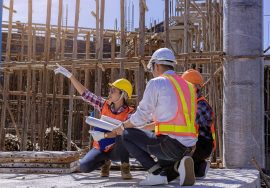
Green Building Commissioning: Optimizing Sustainable Performance
Green Building Commissioning: Driving Sustainable Success
As environmental concerns reshape the construction industry, green building commissioning has become a crucial step in ensuring a project’s sustainability goals are not just design concepts but operational realities. This process verifies that all building systems are designed, installed, tested, and fine-tuned for maximum energy efficiency and minimal environmental impact—right from construction to post-handover.
What is Green Building Commissioning?
Green building is a structured quality assurance process that focuses on verifying sustainable performance objectives. It’s applied throughout a building’s lifecycle—from design and construction to operation and maintenance—to ensure every system works efficiently and meets green certification requirements such as IGBC or LEED.
Why Green Building Commissioning Matters
-
Optimized Energy Efficiency – Reduces operational costs and carbon footprint.
-
Enhanced Indoor Environment – Improves air quality, thermal comfort, and lighting efficiency.
-
Regulatory Compliance – Meets local and international green building standards.
-
Long-Term Durability – Prevents premature system failures and excessive maintenance costs.
-
Supports Certifications – Provides the performance data needed for LEED or IGBC approval.
When to Implement Green Building Commissioning
-
Design Stage – Integrate sustainability goals early.
-
Construction Stage – Monitor materials and installation for eco-compliance.
-
Pre-Handover Stage – Conduct functional performance testing under real conditions.
-
Post-Handover Stage – Track system performance to maintain efficiency.

The Green Building Commissioning Process
1. Define Sustainability Targets
Set measurable goals for energy, water, and resource efficiency.
2. System Design and Review
Ensure MEP and building envelope designs align with green objectives.
3. Installation Oversight
Monitor construction to avoid deviations from sustainable plans.
4. Functional Testing
Verify that HVAC, lighting, water, and renewable systems meet performance requirements.
5. Documentation and Training
Create a commissioning report and train facility staff for efficient system operation.
Best Practices for Effective Green Commissioning
-
Use advanced building performance monitoring tools.
-
Engage experienced commissioning agents with green certification knowledge.
-
Schedule periodic re-commissioning to sustain performance.
-
Maintain a clear documentation trail for audits and compliance.
Conclusion
Green building bridges the gap between sustainable design and real-world performance. By adopting this process, developers ensure energy savings, environmental compliance, and long-term operational excellence.
Looking to integrate green commissioning in your project? Contact AMS India for expert support in achieving sustainable building performance.
Read more related articles to enhance your knowledge and make informed decisions
Project Cost Management: Control Costs and Maximize Value
Project Budgeting Strategies for Efficient Financial Control








